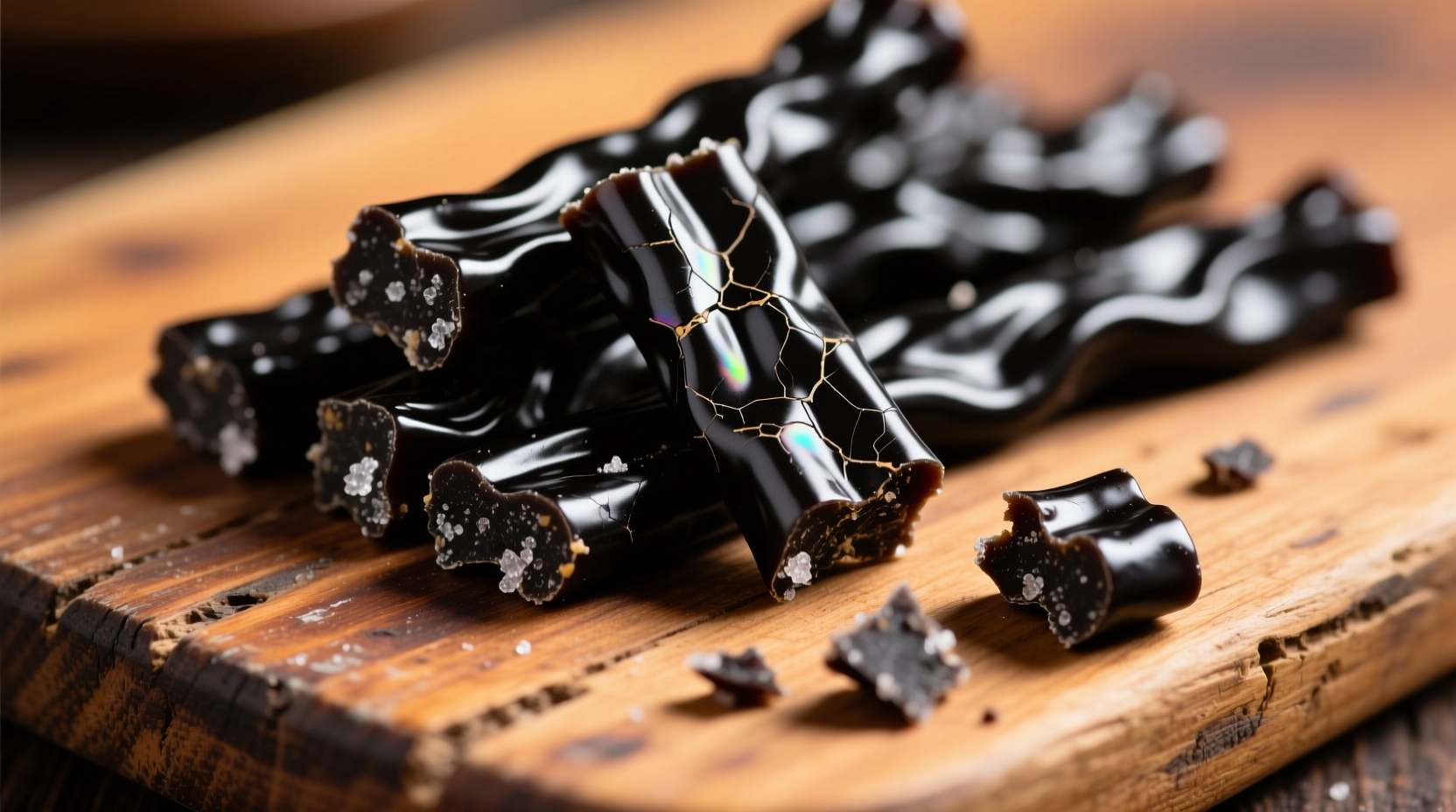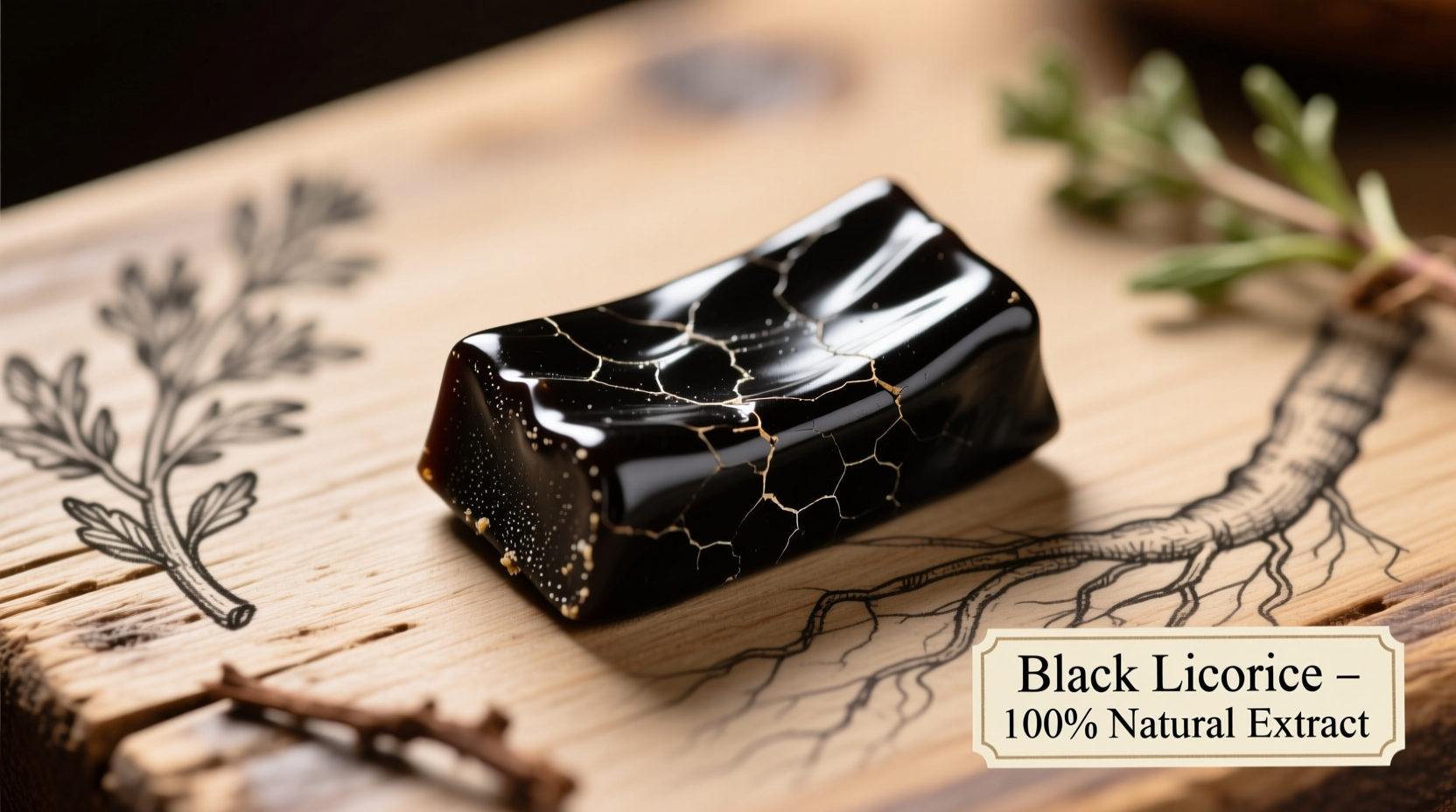Ever wondered what does black licorice taste like that creates such passionate reactions? This distinctive confection divides palates worldwide, with some craving its complex flavor while others can't stand the mere thought of it. Understanding black licorice flavor profile requires exploring its unique sensory characteristics, historical context, and the science behind our varied reactions.
The Core Flavor Experience
When you bite into authentic black licorice, you'll immediately notice several distinct elements working together:
- Anise/licorice root dominance - The primary flavor comes from anethole, the same compound found in anise, fennel, and star anise
- Sweet-herbal balance - High-quality black licorice balances sugar with the natural bitterness of licorice root extract
- Subtle saltiness - Many European varieties include ammonium chloride (salmiak), creating a distinctive salty-savory note
- Earthy undertones - Genuine licorice root extract contributes a complex earthiness absent in artificial versions
- Mouthfeel - Traditional black licorice has a dense, slightly chewy texture that releases flavor slowly
Why Black Licorice Creates Such Polarized Reactions
The extreme love-it-or-hate-it response to what is the taste of black licorice has a scientific explanation. Research from the Nature Scientific Reports shows that genetic variation in the TAS2R38 taste receptor gene determines how intensely people perceive the bitterness in licorice compounds. Approximately 20% of the population carries a variant that makes licorice taste intensely bitter rather than pleasantly herbal.
| Flavor Component | Perception by Genetic Majority (60%) | Perception by Genetic Minority (20%) |
|---|---|---|
| Anethole (primary compound) | Sweet, pleasant herbal note | Intensely bitter, unpleasant |
| Licorice root extract | Complex earthy depth | Medicinal, harsh bitterness |
| Ammonium chloride | Interesting salty complexity | Chemical, off-putting aftertaste |
Black Licorice vs. Red Licorice: A Critical Distinction
Many people confuse black and red licorice, but they're fundamentally different products. Understanding difference between black and red licorice taste is crucial:
- Black licorice contains actual licorice root extract (Glycyrrhiza glabra), giving it the distinctive anise-like flavor
- Red licorice typically contains no licorice root at all—it's usually flavored with strawberry, cherry, or other fruit flavors
- The FDA requires products containing real licorice root to be labeled as "black licorice" to prevent consumer confusion

Historical Context: From Medicine to Candy
Licorice root has been used medicinally for over 4,000 years, with records from ancient Egypt and China. The distinctive black licorice flavor profile we recognize today emerged in 16th century Europe when apothecaries began adding sugar to make the bitter medicinal root more palatable. Dutch and Scandinavian cultures particularly embraced the salty-sweet version (salmiak), while American versions typically emphasize sweetness over saltiness.
Health Considerations: Enjoying Responsibly
While exploring why does black licorice taste like that, it's important to understand consumption limits. The FDA warns that consuming more than 2 ounces daily of black licorice containing glycyrrhizin for two weeks or more can cause health issues including:
- Potassium depletion
- Increased blood pressure
- Heart rhythm problems
This represents a clear scenario applicability and limitations factor—black licorice should be enjoyed in moderation, particularly for those with cardiovascular conditions or taking certain medications. The European Food Safety Authority recommends limiting glycyrrhizin intake to no more than 100mg daily.
Developing an Appreciation for Black Licorice
If you're among those who initially dislike black licorice, your palate may adapt with exposure. Food scientists at the Journal of Sensory Studies found that repeated, mindful tasting can help people develop appreciation for initially disliked flavors. Try these approaches:
- Start with small pieces of high-quality European licorice
- Pair with complementary flavors like dark chocolate or strong coffee
- Try different varieties (Dutch, Scandinavian, American) to find your preference
- Chew slowly to notice the flavor evolution from initial sweetness to herbal finish
Regional Variations Worth Exploring
The question is black licorice supposed to taste bitter depends on where you are. Regional preferences create dramatically different products:
- Netherlands - Salmiak varieties with pronounced ammonium chloride saltiness
- Scandinavia - Complex salty-sweet options often with menthol notes
- United Kingdom - Traditional Pontefract cakes with earthy, less sweet profile
- United States - Sweeter, milder versions like Twizzlers or Good & Plenty
Final Thoughts on Black Licorice Flavor
Understanding how to describe black licorice taste requires acknowledging its complexity—it's simultaneously sweet, herbal, earthy, and sometimes salty. Whether you love it or hate it, black licorice represents one of the most distinctive flavor experiences in the candy world, with a rich history and fascinating science behind our varied reactions. When enjoyed in moderation, it offers a unique sensory journey unlike any other confection.











 浙公网安备
33010002000092号
浙公网安备
33010002000092号 浙B2-20120091-4
浙B2-20120091-4